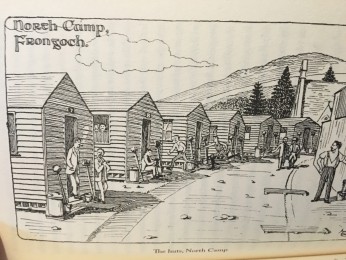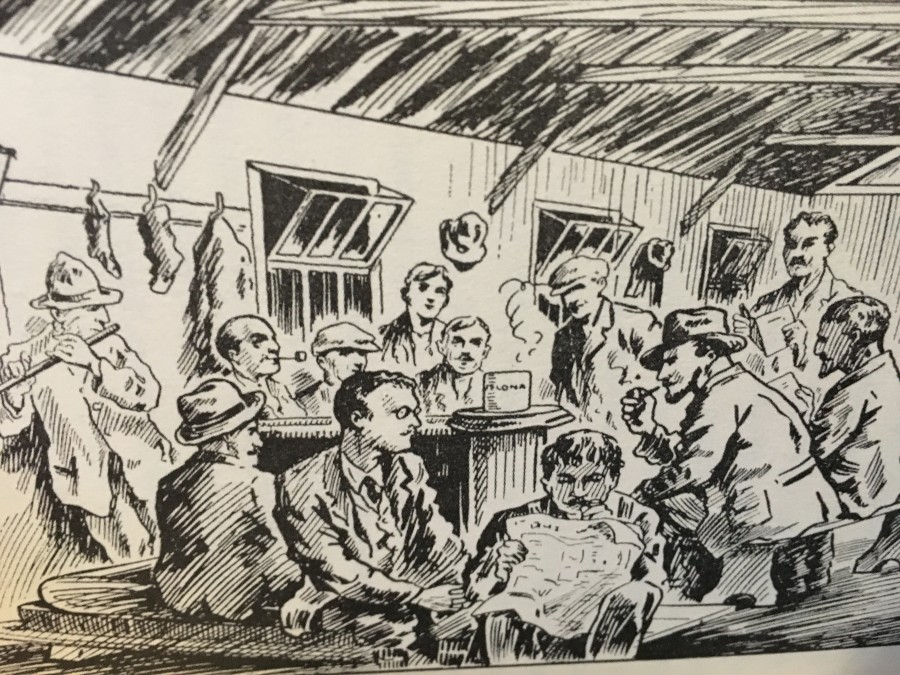
Kieran’s Our City, Our Town Article
Cork Independent, 26 May 2016
Remembering 1916, The Frongoch Deportations
Continuing on from last week’s column, replying to Mr Brian Dillon MP question on the internment of Irish volunteers post the Easter Rising, British Prime Minster Asquith in late May 1916 in Westminster stated that he would treat with the “utmost leniency and release as speedily as possible all persons except those who were concerned directly or indirectly with the rising and the preparations for it, and he also made an exception in the case of persons whose return to Ireland would be a source of danger to the peace of the country”. John Dillon MP, a member of the Irish Parliamentary Party, dominated proceedings in the House of Commons in London on the topic of the Easter Rising and the aftermath. Mr Dillon savaged the policy of the British government in Ireland, condemning in particular the executions of rebels, the holding of secret military trials, the continuation of martial law, and the wholesale searches and arrests being carried out across the country.
By 6 June 1916, the news of the prisoner deportations from Dublin had begun of one hundred prisoners (of eventually over 1800 prisoners) to prisons in such places as Wakefield, Wandsworth, and Knutsford Detention Barracks. Situated in Gwynedd in Wales, Frongoch was also an important detention barracks. The Frongoch Distillery had been founded by R Lloyd Price in 1897. However, by 1910 the enterprise had gone bankrupt and when war was declared against Germany in 1914 the old buildings were taken over as a prisoner of war camp. Several German prisoners died there and were buried in the village churchyard; their bodies were later disinterred and moved to other sites.
Following the Easter Rising it was decided that Frongoch as a remote location would be the ideal place to incarcerate the rebels. Journalist W J Brennan-Whitmore’s book, With the Irish in Frongoch, published in 1917, details that there were two parts to the camp. South Camp was located in the old distillery buildings, whereas North Camp was based in wooden huts a little higher up the hillside close to Capel Celyn. The two camps were connected by a road Conditions at Frongoch were difficult. The old whiskey distillery buildings were bitterly cold at night, very hot during the day, and the prisoners were plagued by an infestation of rats. Although the camp was guarded by soldiers, many locals worked there, in the kitchens and barrack blocks, and came into regular contact with the Irishmen.
Press opinion is editorials such those provided by the Cork Examiner in early June 1916 criticised the detention and deportation programme as not helping to bring about a compromise to the aftermath of the Easter Rising. The continued existence of martial law in Ireland enabled the military to act with absolute authority in such matters, but this was in variance with the various speeches of the Prime Minister Asquith who led the belief that a more “generous course of action could be pursued in connection with the persons under arrest”. Mr Asquith did not definitely commit himself to a promise that the Dublin prisoners or the prisoners detained in England would be forthwith released, but conveyed the desire as the Cork Examiner noted of “dealing in a humane and generous spirit with such prisoners, subject to certain exceptions”.
Mr Dillon responded positively to the announcement of the release of another batch of 200 prisoners, which was made by the military headquarters in early June 1916; “it is satisfactory as far as it goes, but the general opinion, which it may be said is growing more emphatic, is that this plan of release by instalments does not go far enough, and is not at all as effective, and cannot produce such beneficial results, both for Ireland and Great Britain”. The list included several southern names, but the Cork Examiner was quick to note that that many “Munster men are still incarcerated who took no active part in the recent disturbances, and their families, who have been left unprovided for, are naturally restless and discontented at the delay”.
Fast forward to 15 July and the Cork Examiner details that thirty–eight out of the several hundred prisoners ordered to be released from Frongoch internment camp arrived into Cork the previous day. They were mostly from the county, the greater number of them belonging to Macroom and the neighbouring districts. They left for their respective homes in the afternoon. During the evening others were arriving by the train getting into Cork at 8.35, and a number of sympathisers, headed by a couple of pipers playing national airs went to the Glanmire Station to meet them. The party then proceeded to the National Monument on the Grand Parade. It seemed as if they were about to hold a meeting, but whether this was so or not the police interfered and prevented any such taking place if intended. The party scattered into groups and disappeared in the side streets.
The camp at Frongoch was closed and the Irish prisoners discharged in December 1916. It had been a short lived experiment where the ideals of Irish Republicanism were established and strengthened rather than broken down.
Captions:
845a. Illustration of the huts, North Camp from W J Brennan-Whitmore’s book, With the Irish in Frongoch, first published in 1917; reprinted copies are available from Mercier Press, Cork.
845b. Illustration of the recreation inside the huts, from W J Brennan-Whitmore’s book, With the Irish in Frongoch, first published in 1917.
